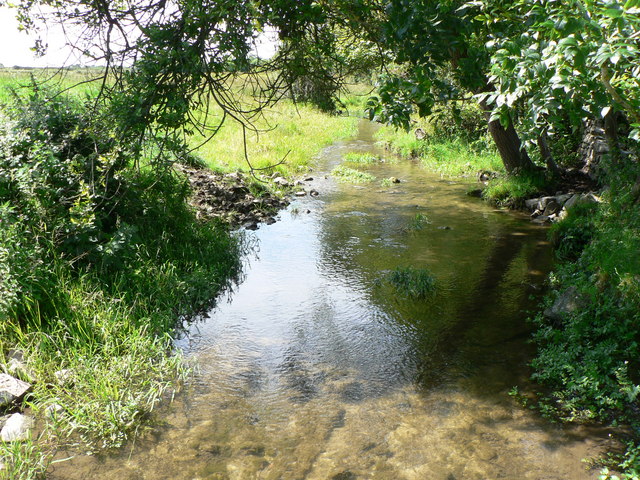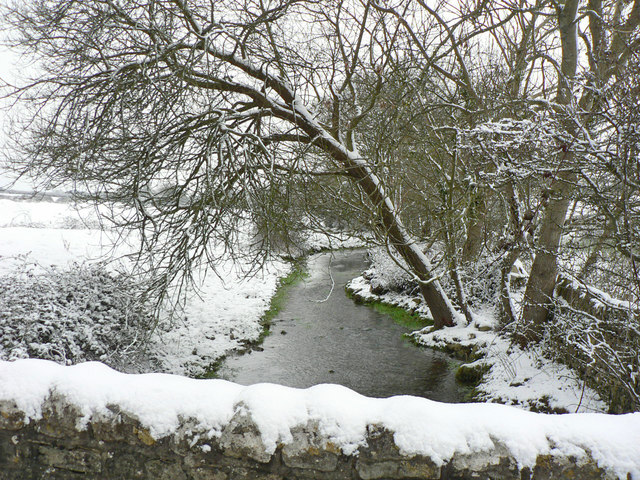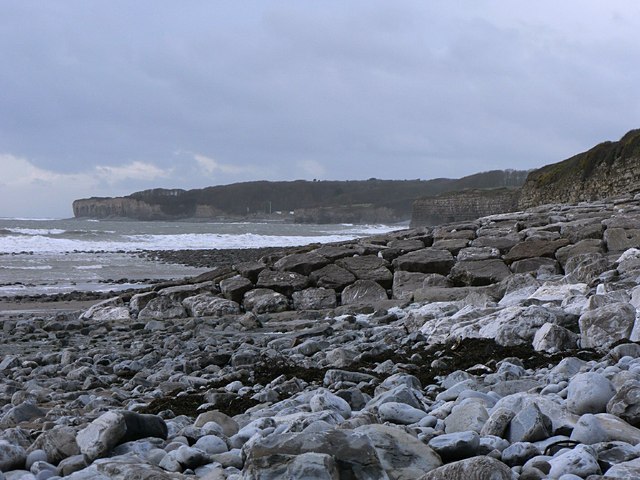Afon Col-huw on:
[Wikipedia]
[Google]
[Amazon]
The Afon Col-huw (Often River Colhuw, sometimes Anglicised Colhugh) is a very short river in Llantwit Major in the
 The Ogney Brook is one of the two rivers that join to form the Col-huw. Its total length is over 1 mile long, and it flows along the western fringes of Llantwit Major. Its source is just northwest of the town. In 1998 the brook flooded, causing significant damage to 9 properties and a pumping station.
The Ogney Brook is one of the two rivers that join to form the Col-huw. Its total length is over 1 mile long, and it flows along the western fringes of Llantwit Major. Its source is just northwest of the town. In 1998 the brook flooded, causing significant damage to 9 properties and a pumping station.
/ref>
 The Hoddnant is the larger of the Col-huw's tributaries. It is two miles long and is formed at Llanmaes, at the confluence of the Llanmaes Brook and the Boverton Brook.
In days gone by, the Hoddnant's name was translated into English, and it became known as the Merryvale, or Merry Brook.
The Hoddnant is the larger of the Col-huw's tributaries. It is two miles long and is formed at Llanmaes, at the confluence of the Llanmaes Brook and the Boverton Brook.
In days gone by, the Hoddnant's name was translated into English, and it became known as the Merryvale, or Merry Brook.
 The Llanmaes Brook is the longest section of the Col-huw watercourse. Its source is over a kilometre north of Llantwit Major. The Brook flows in a southeastern direction through the town of
The Llanmaes Brook is the longest section of the Col-huw watercourse. Its source is over a kilometre north of Llantwit Major. The Brook flows in a southeastern direction through the town of
 Remains of a small port have been discovered roughly 200 metres out to sea from the beach. It lay at the historical mouth of the Col-huw, like several other such settlements in South Wales. Radiocarbon dating of its remains have been dated as between 1400 and 1600. The port was destroyed when the surrounding land began eroding and receding. A flat area below the cliffs that went out a long way, but became submerged. It is assumed that due to this, the river, along which goods could be transported all the way upstream to Llantwit, silted up and became the mere stream it is today.
Remains of a small port have been discovered roughly 200 metres out to sea from the beach. It lay at the historical mouth of the Col-huw, like several other such settlements in South Wales. Radiocarbon dating of its remains have been dated as between 1400 and 1600. The port was destroyed when the surrounding land began eroding and receding. A flat area below the cliffs that went out a long way, but became submerged. It is assumed that due to this, the river, along which goods could be transported all the way upstream to Llantwit, silted up and became the mere stream it is today.
Vale of Glamorgan
The Vale of Glamorgan ( cy, Bro Morgannwg ), often referred to as The Vale, is a county borough in the south-east of Wales. It borders Bridgend County Borough to the west, Cardiff to the east, Rhondda Cynon Taf to the north, and the Bristol ...
, south Wales
Wales ( cy, Cymru ) is a country that is part of the United Kingdom. It is bordered by England to the east, the Irish Sea to the north and west, the Celtic Sea to the south west and the Bristol Channel to the south. It had a population in ...
.
It is an exceptionally short river, with a length of only 1 mile/1.6 kilometres long. It is formed when two rivers, the Ogney Brook and the Hoddnant converge south of Llantwit Major. Its valley, the Cwm Col-huw, is a Scheduled Ancient Monument - it was used in the Dig for Victory
Victory gardens, also called war gardens or food gardens for defense, were vegetable, fruit, and herb gardens planted at private residences and public parks in the United States, United Kingdom, Canada, Australia and Germany during World War I ...
campaign in World War II
World War II or the Second World War, often abbreviated as WWII or WW2, was a world war that lasted from 1939 to 1945. It involved the vast majority of the world's countries—including all of the great powers—forming two opposing ...
.
Ogney Brook
 The Ogney Brook is one of the two rivers that join to form the Col-huw. Its total length is over 1 mile long, and it flows along the western fringes of Llantwit Major. Its source is just northwest of the town. In 1998 the brook flooded, causing significant damage to 9 properties and a pumping station.
The Ogney Brook is one of the two rivers that join to form the Col-huw. Its total length is over 1 mile long, and it flows along the western fringes of Llantwit Major. Its source is just northwest of the town. In 1998 the brook flooded, causing significant damage to 9 properties and a pumping station./ref>
Hoddnant
 The Hoddnant is the larger of the Col-huw's tributaries. It is two miles long and is formed at Llanmaes, at the confluence of the Llanmaes Brook and the Boverton Brook.
In days gone by, the Hoddnant's name was translated into English, and it became known as the Merryvale, or Merry Brook.
The Hoddnant is the larger of the Col-huw's tributaries. It is two miles long and is formed at Llanmaes, at the confluence of the Llanmaes Brook and the Boverton Brook.
In days gone by, the Hoddnant's name was translated into English, and it became known as the Merryvale, or Merry Brook.
Boverton Brook
The Boverton Brook is the smaller of the Hoddnant's two tributaries. It does not run through Boverton per se; by then it has merged with the Llanmaes Brook to form the Hoddnant. The Boverton Brook flooded significantly in the 1998 floods, causing damage on 31 October that year to 11 properties and an electricity sub-station.Llanmaes Brook
 The Llanmaes Brook is the longest section of the Col-huw watercourse. Its source is over a kilometre north of Llantwit Major. The Brook flows in a southeastern direction through the town of
The Llanmaes Brook is the longest section of the Col-huw watercourse. Its source is over a kilometre north of Llantwit Major. The Brook flows in a southeastern direction through the town of Llanmaes
Llanmaes ( cy, Llanfaes) is a small village and community in the Vale of Glamorgan near the market town of Llantwit Major. The population in 2011 was 403.
Amenities
Llanmaes has a long history, with remains of a Roman fort in fields next to ...
, joining the Boverton Brook by a railway in northeast Boverton.
Like many other small Welsh rivers, the Llanmaes Brook caused damage and flooding in the 1998 floods
1998 was designated as the ''International Year of the Ocean''.
Events January
* January 6 – The ''Lunar Prospector'' spacecraft is launched into orbit around the Moon, and later finds evidence for frozen water, in soil in permanently s ...
; in Llanmaes a total of 7 properties were disrupted, and the floodwaters also caused havoc as they flooded the properties downstream. Areas of Llanmaes are still susceptible to flooding today.
Mouth
The river meets the sea at Col-huw Point, where Llantwit Major beach is situated. At its mouth the river flows through the sand and stones of Llantwit beach. The mouth of the river was originally sandy, but dredging in the Bristol Channel and thus degradation of the Nash Bank, have meant that less and less sand lies around the estuary. Remains of a small port have been discovered roughly 200 metres out to sea from the beach. It lay at the historical mouth of the Col-huw, like several other such settlements in South Wales. Radiocarbon dating of its remains have been dated as between 1400 and 1600. The port was destroyed when the surrounding land began eroding and receding. A flat area below the cliffs that went out a long way, but became submerged. It is assumed that due to this, the river, along which goods could be transported all the way upstream to Llantwit, silted up and became the mere stream it is today.
Remains of a small port have been discovered roughly 200 metres out to sea from the beach. It lay at the historical mouth of the Col-huw, like several other such settlements in South Wales. Radiocarbon dating of its remains have been dated as between 1400 and 1600. The port was destroyed when the surrounding land began eroding and receding. A flat area below the cliffs that went out a long way, but became submerged. It is assumed that due to this, the river, along which goods could be transported all the way upstream to Llantwit, silted up and became the mere stream it is today.
References
{{authority control Rivers of the Vale of Glamorgan